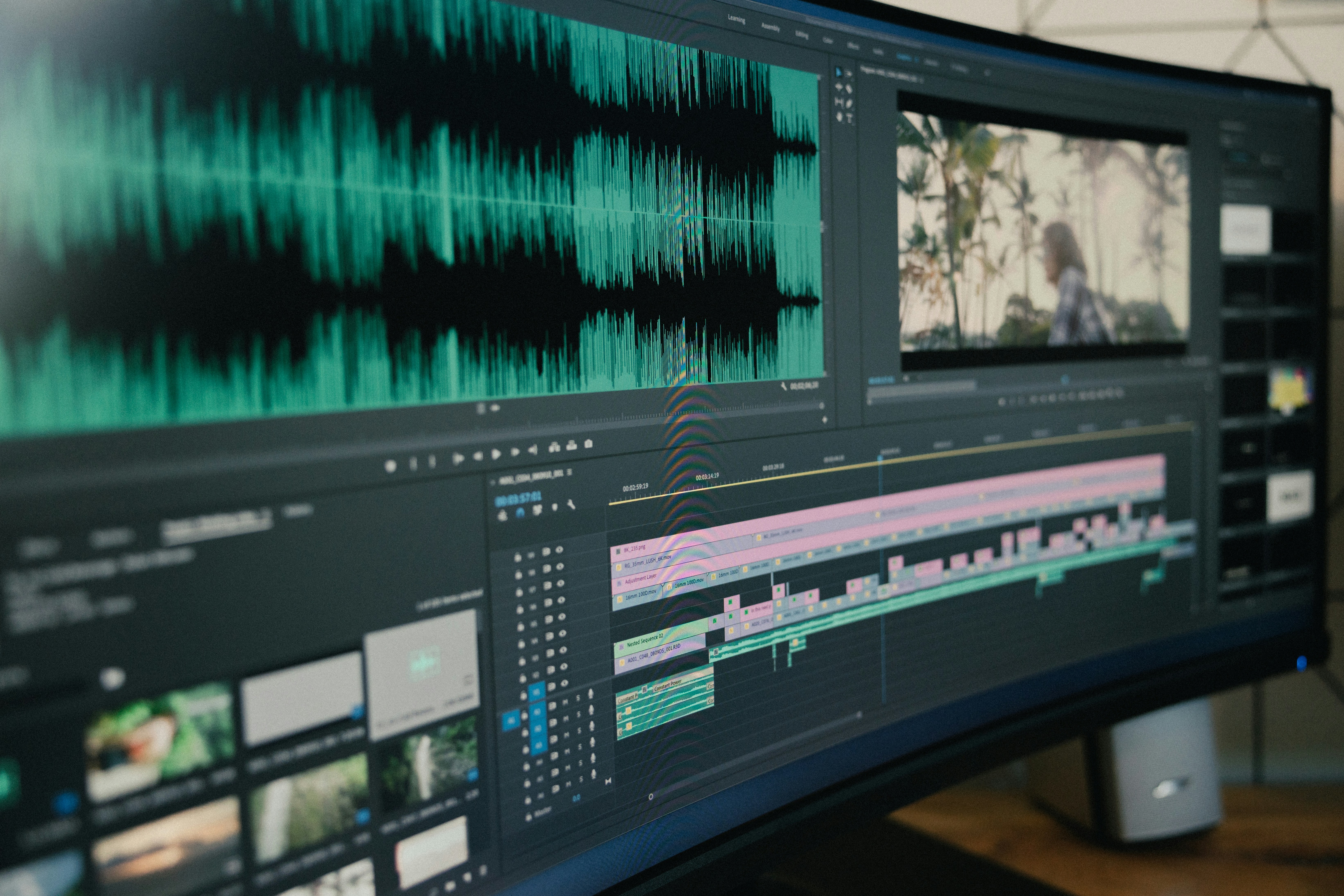What Is a Post-Production Workflow Overview?
by WriteSeen
A post-production workflow overview breaks down the process of transforming raw creative content into finalized pieces. It includes stages like ingestion, editing, color correction, visual effects, sound design, and final rendering.
Each part of the workflow plays a critical role in refining and optimizing content. Mastering this sequence helps creators and industry pros deliver high-quality work efficiently and effectively.
Importance of an Effective Post-Production Workflow
Rolling out creative content that dazzles requires more than inspiration and raw footage. It demands an effective post-production workflow—the backbone of any successful project. When you fine-tune your process, you ensure that deadlines are met, resources are optimized, and quality doesn't falter. This operational framework isn't just about getting things done; it's about getting them done brilliantly and efficiently.
- Boost Productivity and Quality: A well-structured workflow trims inefficiencies that slow down progress. It allows you to streamline processes and cut down on errors, delivering tighter, more polished content.
- Stay on Budget: By eliminating redundancies and optimizing the use of time and resources, you can significantly reduce project costs, staying within budget without compromising on quality.
- Enhanced Collaboration: When roles are clearly defined and responsibility is mapped out, team members work in harmony. This synergy facilitates quicker problem-solving and fosters an environment where creativity flourishes.
Ultimately, an effective post-production workflow empowers you to consistently produce high-quality content. It is about maintaining the tempo of creativity while hitting all the right notes in project management.
Key Stages of a Post-Production Workflow
Navigating the post-production process involves several essential stages. Each phase plays a pivotal role, taking your project from concept to completion. Understanding and mastering these key stages is crucial for any creator or professional in the field.
Ingestion and Organization
Before any magic happens, you need to manage the influx of raw footage or audio. Proper digital asset management ensures everything is organized and accessible. This stage sets the foundation, where well-cataloged content leads to a smoother workflow down the line.
Editing and Refinement
Editing is where the narrative takes shape. It involves selecting the best takes, arranging clips, and refining the storyline. Effective editing can cut down on rework, streamline the storytelling process, and smooth out the narrative flow.
Color Correction and Visual Effects
Color correction sets the tone and mood of your project. It goes beyond aesthetics, contributing to the thematic essence of the piece. Incorporating visual effects can elevate a project, adding layers of depth and engagement.
Sound Design
Sound design amplifies the emotional impact and viewer connection. It entails crafting the sonic elements—dialogue, music, and effects—that enrich the audio landscape. A compelling audio experience can pull audiences in just as powerfully as visuals.
Final Rendering and Distribution
Rendering is the final step, ensuring the project is ready for distribution. This stage demands precision to maintain the quality across different platforms. Seamlessly integrating all the elements ensures a cohesive and polished end product.
Success in post-production hinges on a meticulous flow from start to finish—each stage aligning to bring your creative vision to life.
Collaboration and Feedback in Post-Production
In the world of post-production, smooth collaboration and effective feedback loops are your best allies. Working together seamlessly and exchanging constructive input accelerates the pathway to producing exceptional content. Real-time collaboration acts as the heartbeat of this workflow, turning potential roadblocks into stepping stones of innovation.
- Accelerate Revisions: Collaborative tools allow teams to reduce revision cycles, ensuring you can swiftly pivot and adapt as needed.
- Eliminate Miscommunication: By using platforms that facilitate real-time annotations and comments, team members can provide precise feedback, reducing the risk of misunderstandings.
- Foster Creativity: When feedback is seamlessly integrated, it encourages a creative dialogue that can lead to groundbreaking ideas and refinements.
At WriteSeen, we understand the power of collaboration and the importance of maintaining creative control. Our platform is designed to provide a secure, distraction-free environment where creators can thrive together, enhancing communication and paving the way for innovation in every project.
Challenges and Solutions in Post-Production Workflows
Navigating post-production presents its set of challenges, but with the right strategies, they become manageable. Common obstacles such as tight deadlines, tech glitches, and resource limitations can hinder progress. Yet, solutions exist to turn these challenges into opportunities for improvement.
Managing Time Constraints
Time is always ticking in post-production. Efficient scheduling and prioritization ensure you meet project deadlines without sacrificing quality. Break down tasks, automate where possible, and allocate resources wisely to maintain momentum.
Overcoming Technical Issues
Technology can be both a boon and a bane. Staying updated with the latest advancements—like AI tools and automation—can help streamline processes and troubleshoot issues efficiently. Embrace these tools to cut down repetitive tasks and enhance accuracy.
Resource Optimization
When resources feel stretched, cloud-based solutions offer scalability. They allow you to access and share resources without hefty investments. This adaptability can make a significant difference, especially in fast-paced industries.
By addressing these challenges with strategic solutions, you can maintain a fluid and productive workflow. Keeping your team versatile with cross-training can also mitigate bottlenecks, ensuring that progress never stalls.

Tools and Software for Post-Production
The right tools can dramatically enhance your post-production workflow. While the choices are vast, focusing on tools that align with your project's requirements will optimize your efficiency and precision. Look for software that integrates seamlessly, enhances collaboration, and fits the specific needs of your project.
- Editing Software: Intuitive, robust options can enhance your editing capabilities and streamline workflows.
- Color Grading Tools: Specialized platforms help hone the visual aesthetic, offering advanced grading options that enrich your project's overall look.
- Sound Design Solutions: Audio tools that integrate well with video editing software can lead to a cohesive production experience, saving time and reducing frustration.
The evolution of post-production tools continues to shape creative landscapes, offering new possibilities with each advancement. By leveraging the right software, you empower your projects with the quality and efficiency they deserve.
Collaboration and Feedback in Post-Production
Let's dive into the lifeblood of post-production: collaboration and feedback. Your creative vision doesn't thrive in isolation. It matures through active engagement, where ideas burgeon and evolve. In post-production, collaboration isn't just beneficial—it's vital.
-
Facilitates Real-Time Adjustments: Using tools that allow for instant feedback means you can iterate quickly. You catch issues early, refine content, and adapt without losing time. This keeps your workflow fluid and responsive.
-
Boosts Creativity and Innovation: When different minds meet, creativity blossoms. Fresh perspectives push boundaries and spark innovative solutions that might never occur to solo creators.
-
Enhances Quality Control: Feedback is your second pair of eyes, catching mistakes you might miss. Peer insights ensure a polished, more coherent final product.
Platforms like ours at WriteSeen offer you a secure, distraction-free space, perfect for exchanging feedback. With timestamped project storage and a collaborative environment, we help you manage this crucial aspect smoothly. Imagine the efficiency when everyone’s feedback converges in one place—enhancing your control and creativity.
Challenges and Solutions in Post-Production Workflows
In post-production, facing challenges is part of the creative journey. Your workflow's success hinges on addressing obstacles head-on with effective solutions. Knowing what to expect helps you maneuver through potential pitfalls adeptly.
Common Challenges
-
Time Management: Tight deadlines can create pressure. Balancing quality with quick turnarounds is challenging but necessary.
-
Technological Hiccups: Software crashes and hardware failures are costly in both time and money. Staying prepared is key.
-
Resource Limitations: Budget constraints can limit access to the best tools or talent, affecting your project's potential.
Proactive Solutions
- Leverage scheduling tools to allocate your time better, ensuring every task gets the attention it needs without cutting corners on quality.
- Regularly update software and invest in reliable hardware to mitigate tech troubles. Consider cloud solutions for their flexibility and scalability.
- Cross-train team members to handle multiple roles in a pinch. This flexibility keeps the workflow moving, even when limited resources threaten to stall it.
Embrace these strategies, and you’ll overcome common post-production hurdles with newfound confidence.

Innovations and Future Trends in Post-Production
Post-production's future is exploding with innovation, offering you exciting opportunities to transform your workflow. Staying ahead of trends ensures you remain competitive in an evolving landscape.
-
AI-Powered Tools: Automate repetitive tasks to save time. AI helps you focus on creative decisions rather than mundane editing tasks.
-
Cloud-Based Systems: Facilitate remote collaborations seamlessly. Your team can access files from anywhere, making distributed work more cohesive.
-
Virtual Reality (VR) and Augmented Reality (AR): Revolutionizing storytelling by immersing audiences in new worlds. These technologies expand your narrative capabilities.
-
Blockchain for Rights Management: Enhance security and accountability. It simplifies tracking digital rights, offering both creators and consumers better protection and transparency.
Technological advances empower you to push creative boundaries and streamline processes. Incorporating these trends into your workflow can elevate the quality and speed of content production, giving you a competitive edge. At WriteSeen, we're committed to supporting your journey through these changes, helping you harness innovation to its full potential.
Conclusion
Your post-production workflow is the powerhouse behind every successful creative project. Mastering its elements ensures timely delivery while maintaining high-quality standards.
Navigating these stages, from collaboration to embracing innovative trends, transforms how you create, enhance, and deliver your work. Embrace each step and tool, and watch your projects soar.
TAGS
